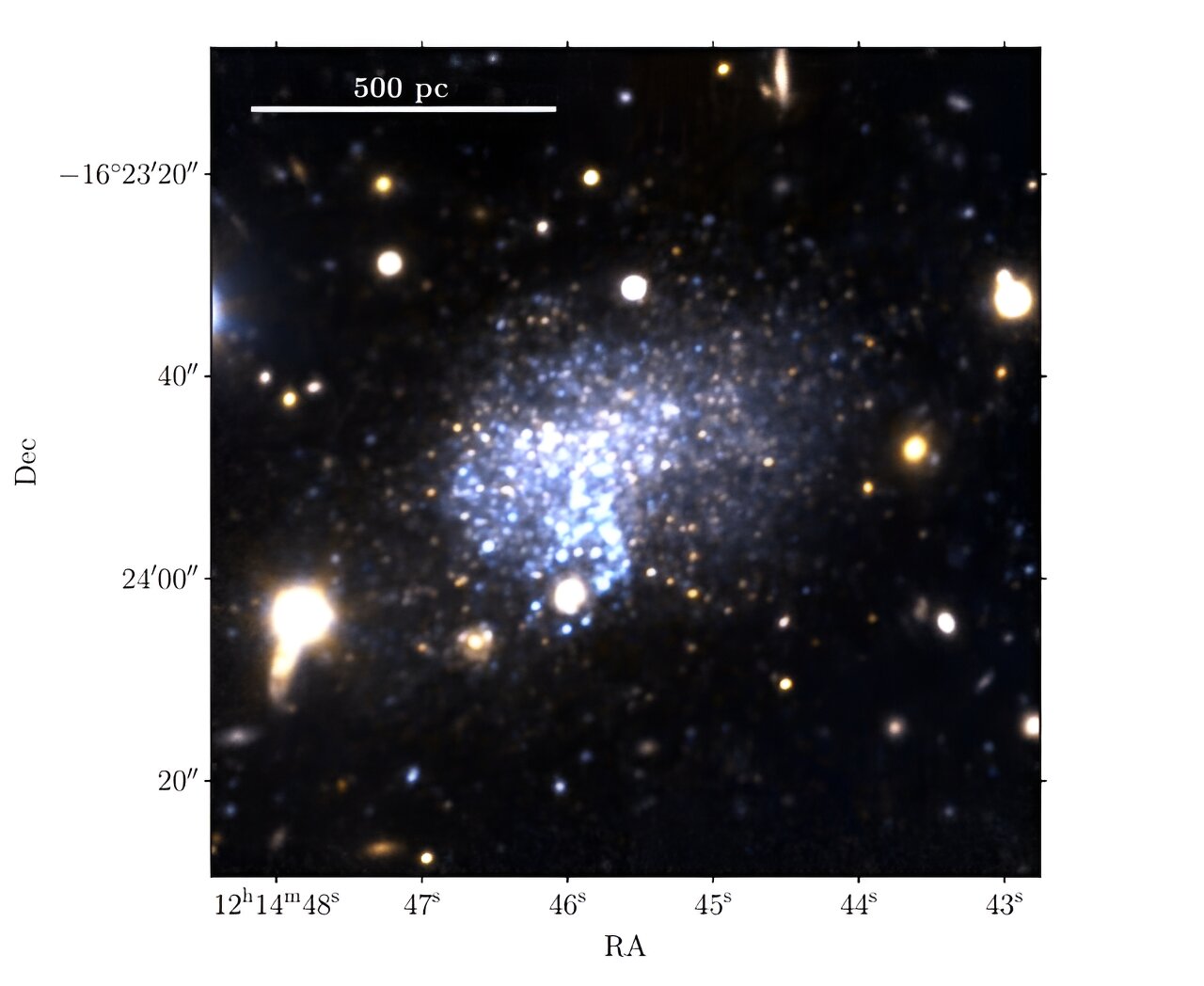Astronomers have found a new low-luminosity star system in the constellation Corvus. This dwarf galaxy is 11.3 million light years away from us and there is nothing nearby.

New dwarf galaxy
Astronomers report the discovery of a new galaxy in the constellation Corvus. The newly discovered galaxy, which has been designated Corvus A, is relatively low mass, gas-rich and isolated. The discovery was presented in a research paper published July 3 on the arXiv preprint server.
The discovery was made by the SEAMLESS project, which found many neighboring low-mass galaxy candidates. It is a semi-automated machine search for semi-unbound galaxies. The project relies on masking the emission of bright stars and their systems, followed by filtering the images at different scales to reveal faint, extended sources.
Corvus A was first detected in old Dark Energy Spectroscopic Instrument (DESI) images. Recently, a team of astronomers led by Michael G. Jones at the University of Arizona in Tucson made further observations of this object using facilities such as the Magellan Clay telescope or Karl G. Jansky Very Large Array (VLA), allowing them to confirm the low-mass galaxy status for Corvus A.
Features of the newfound galaxy
Observations showed that the stellar body of Corvus A has an irregular structure, and its light is dominated by a region of young blue stars on its eastern side. Therefore, astronomers emphasized that its blue, lumpy and irregular appearance resembles Leo P, a small irregular galaxy in the constellation Leo, one of the least massive in the Local Group, as its stellar mass is estimated to be about 560,000 solar masses.
According to the study, Corvus A, with a radius of 834 light-years, is only a few times more massive than Leo P and contains many young stars less than 200 million years old. The study shows that the new galaxy is rich in gas. It has no regions of ionized interstellar atomic hydrogen — the so-called H II regions.
The distance to the newfound galaxy is about 11.3 million light-years. It was also discovered that there were no other galaxies within about 3.3 million light-years radius of Corvus A, making it extremely isolated.
Wonderful object for further research
Astronomers noted that the proximity of Corvus A makes it an excellent target for further high-resolution observations in both the radio and optical bands, which could shed more light on the kinematics of this newfound low-mass galaxy.
“With higher spectral and spatial resolution data (e.g. from MeerKAT or additional VLA configurations) it should be possible both to separate the broadening from the warm and cold neutral media, and to distinguish the contributions from turbulence and rotation, at which point it may be possible to fit a kinematic model and determine a rotation velocity if the inclination is not too small,” the paper’s authors conclude.
According to phys.org


